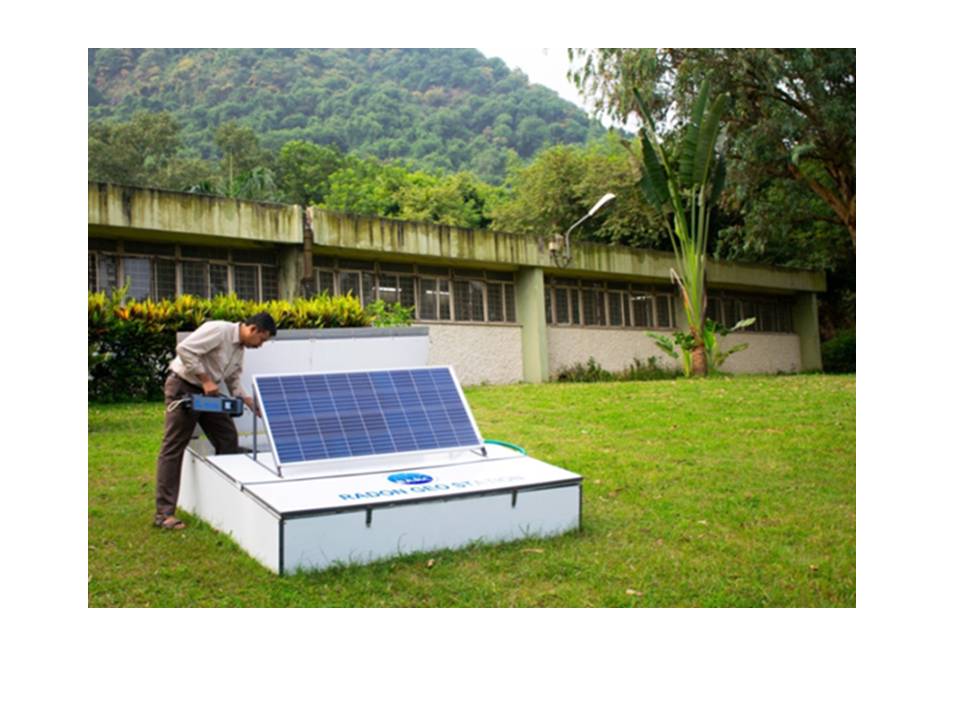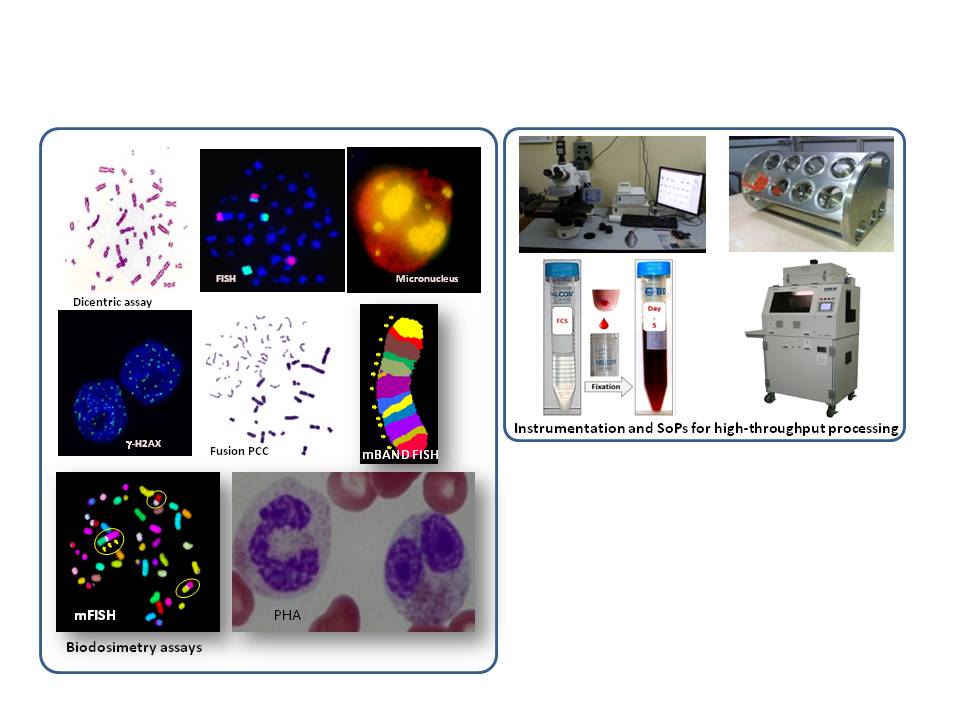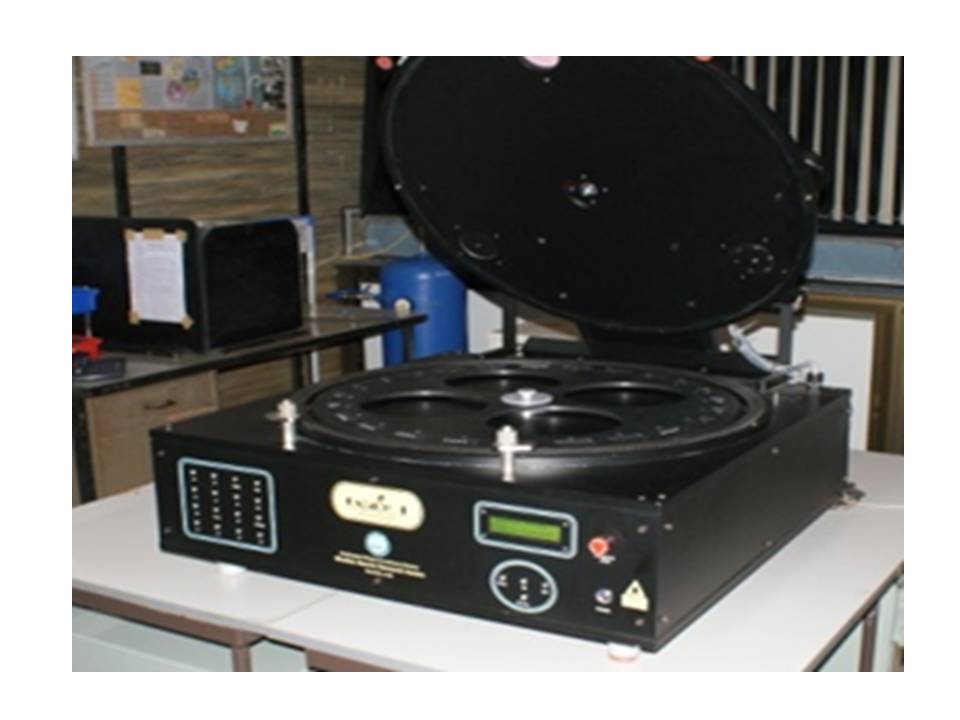

Radiological Physics and Advisory Division is actively engaged in Personal Monitoring of Indian Radiation workers and maintenance of National Occupational Dose Registry, Quality Assurance and Accreditation of TLD personnel monitoring laboratories, Advance TL/OSL monitoring systems, Phosphors for dosimetric applications, Severe Reactor Accident related Aerosol Simulation studies, Development of systems and techniques for aerosol measurement, measurement of radon, thoron and their progenies for dosimetry and other applications, multiparametric bio-dosimetric techniques and Radiobiological studies, Development of computational techniques, Advance dosimetry methods, QA procedures, phantoms and protocols for radio-diagnostic and radiotherapy applications. HRD activity: Post M.Sc. Diploma in Radiological Physics, Radiation Safety Officer.
Radiation Safety Systems Division is carrying out Design & development of embedded systems and softwares for radiation detection, radiation survey, spectrometric analysis, Tritium measurement and automation & networking of radiation monitoring Instrumentation, Ensuring 25 DAE Radiation Emergency Response Centres in state of preparedness, Radiological Impact Assessment (RIA) for waste disposal and discharge activities of DAE facilities through atmospheric and aquatic routes, meteorological and hydrological data collection, development and application of models to simulate fate of released radionuclides in atmospheric and aquatic systems. Carrying out training programmes for paramilitary, defence, police, fire-fighting and medical agencies.
Health Physics Division is the devoted to the protection of humans and their environment from potential radiation hazards. Develop measures to control radiological hazards; monitors personnel and facilities to ensure that health hazards are within permissible limits stipulated by the national regulatory body. Covers activities from front- end to the back-end of the fuel cycle, from the assessment of mining sites to reprocessing of the fuels. Activities starts with the conceptualisation of a radiation facility with the radiological impact assessments, design of shielding and criticality safety measures, safety measures to be taken during operations, handling of unusual events, emergency preparedness of the plant site to the decommissioning of radiological establishments. Health physics division also ensures safety of the accelerators, public health and environmental impacts of the operating radiological installations.
Environmental Monitoring and Assessment Division carrying out Environmental Radiological Surveillance around Nuclear Power Plants across the country, Trombay and Visakhapatnam, all DAE facilities using TLDs, designing and developing Environmental Radiation Monitoring Systems, establishing countrywide Environmental Radiation Monitoring Network under IERMON, Environmental Monitoring, Assessment and Modeling of Radioactive and Non-Radioactive contaminants, Capacity building for nuclear forensic analysis.
Planning, scheduling and carrying out industrial hygiene and safety surveillance activities that includes- Industrial hygiene surveillance in occupational environment at the various operating facilities of BARC, beryllium facilities, Industrial Safety Management and implementation of accident prevention programme, Contribution to project safety reviews through HAZOP study review, CFSRC, DSRCs. ULSCs and PLSCs, execution of conventional emergency preparedness planPlanning, organising and executing all pertinent R&D activities in the field of industrial hygiene and safety,calibration of safety related equipment.
The Radiation Monitoring Watch (RMW) is a GM tube based, lightweight, compact, and ultra low power gamma radiation monitoring gadget in the form factor of a wrist watch. It indicates the prevailing dose rate, accumulated dose and current date & time. ideal device for the first responders attending to an emergency or disaster to rule out the presence of a radiological event and can also assist the during the management of a radiological emergency.
Varying amounts of chemicals of anthropogenic origin are found to have carcinogenic or mutagenic properties. Exposure can occur when these agents are present in food, air or water. Monitoring of these carcinogens involves sampling and analyte specific method development of trace level analysis.
Varying amounts of chemicals of anthropogenic origin are found to have carcinogenic or mutagenic properties. Exposure can occur when these agents are present in food, air or water. Monitoring of these carcinogens involves sampling and analyte specific method development of trace level analysis.
Under this programme environmental gamma radiation monitoring, using thermo-luminescent dosimeters (TLDs) around all the nuclear installations in India is being carried out by EMAD. Over large areas the TLD-recorded radiation profiles can reflect the environmental gamma
Under this programme environmental gamma radiation monitoring, using thermo-luminescent dosimeters (TLDs) around all the nuclear installations in India is being carried out by EMAD. Over large areas the TLD-recorded radiation profiles can reflect the environmental gamma
Environmental Gamma Spectrometry System (EGSS) is a standalone, solar powered, and battery-operated unit that can be installed in open field. It has a 2” diameter by 2” height NaI (Tl) scintillator-based gamma spectrometer, together with GM tube based gross gamma detectors.
The multichannel analyser used in the spectrometer is developed in-house and eliminates the requirement of a PC for data logging.
Environmental Gamma Spectrometry System (EGSS) is a standalone, solar powered, and battery-operated unit that can be installed in open field. It has a 2” diameter by 2” height NaI (Tl) scintillator-based gamma spectrometer, together with GM tube based gross gamma detectors.
The multichannel analyser used in the spectrometer is developed in-house and eliminates the requirement of a PC for data logging.
Use of remotely sensed data (Landsat, LISS-III) and GIS for estimation of population and its distribution, up to village level, around nuclear power plants.
Use of remotely sensed data (Landsat, LISS-III) and GIS for estimation of population and its distribution, up to village level, around nuclear power plants.
A real time online system with 72 hours meteorological forecasts and radiological data, along with optimum countermeasures, as a supporting tool to decision makers handling off-site nuclear emergency, has been designed and developed under the frame work of “Indian Real time Online Decision Support System “IRODOS”, for Nuclear Power Plants (NPPs). This takes care of the predictive requirement for emergency planning.
A real time online system with 72 hours meteorological forecasts and radiological data, along with optimum countermeasures, as a supporting tool to decision makers handling off-site nuclear emergency, has been designed and developed under the frame work of “Indian Real time Online Decision Support System “IRODOS”, for Nuclear Power Plants (NPPs). This takes care of the predictive requirement for emergency planning.

Radon Geo station has been developed to detect Radon anomaly which has the potential for early warning of earthquakes. A network of 100 such station is being created in Indian Tectonic Plate Boundary for increasing the reliability and exploring the possibility of earthquake prediction.

High throughput and advanced biodosimetry facilities established at BARC to address regulatory analysis of occupational exposures and manage radiological incidents. These facilities and established assays help assessment of biological dose

Optically Stimulated Luminescence Badge Reader (OSBARE) system for reading OSLD personnel monitoring badge has been designed and developed by RP&AD, BARC. This system uses 470 nm LED stimulation for CW-OSL readout along with photon counting detection module. The reader system can process 24 four element OSLD badge in ~ 25 min.